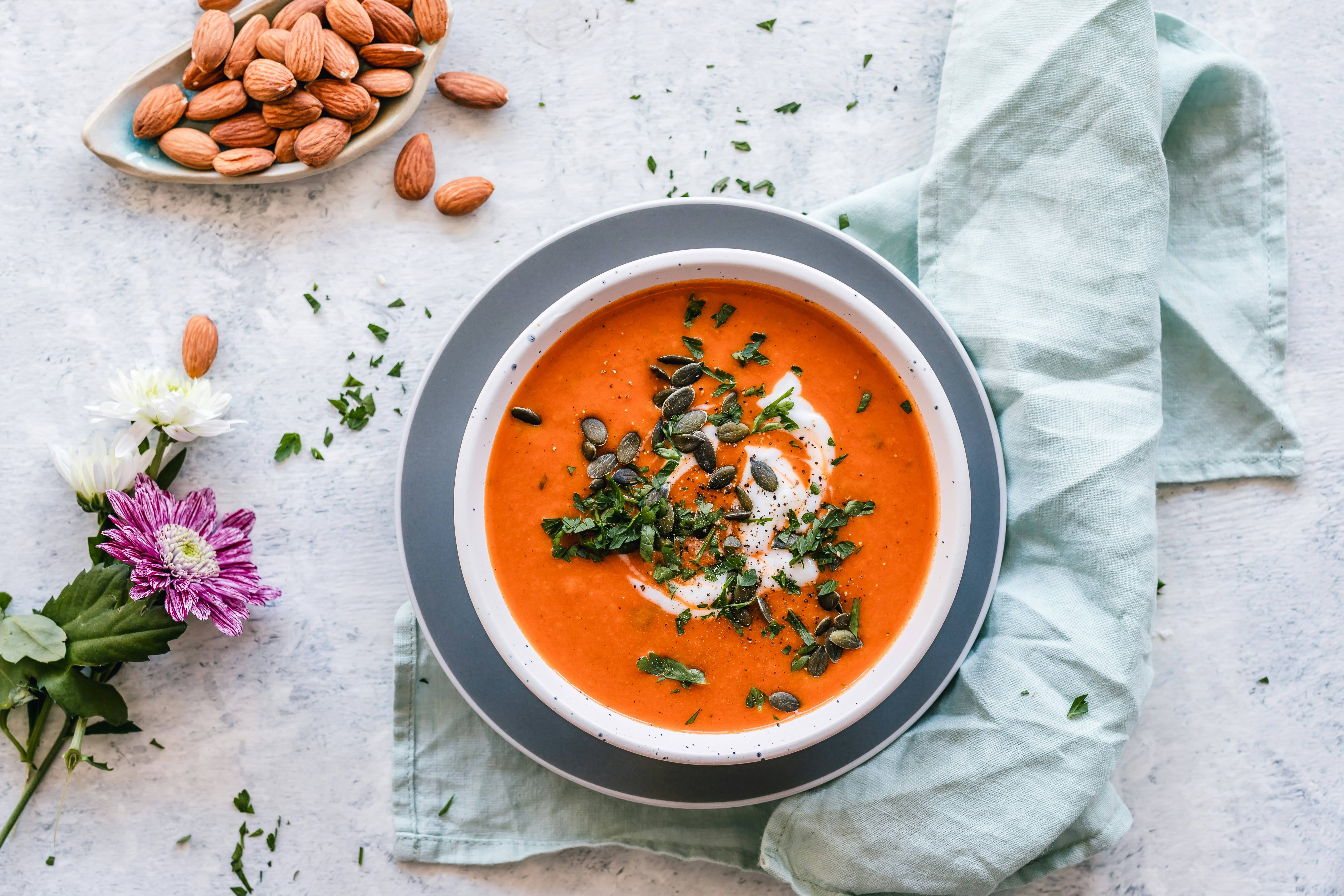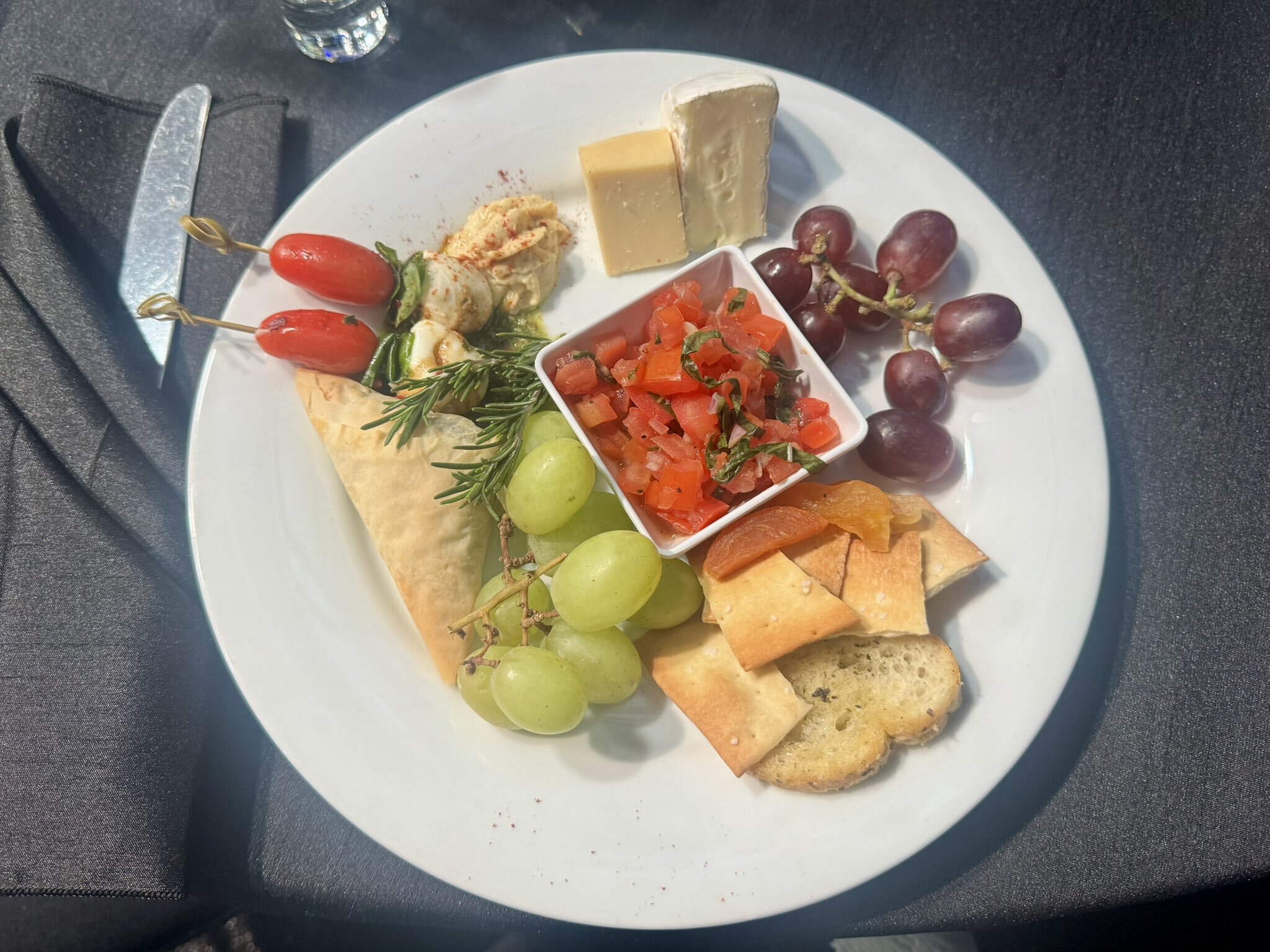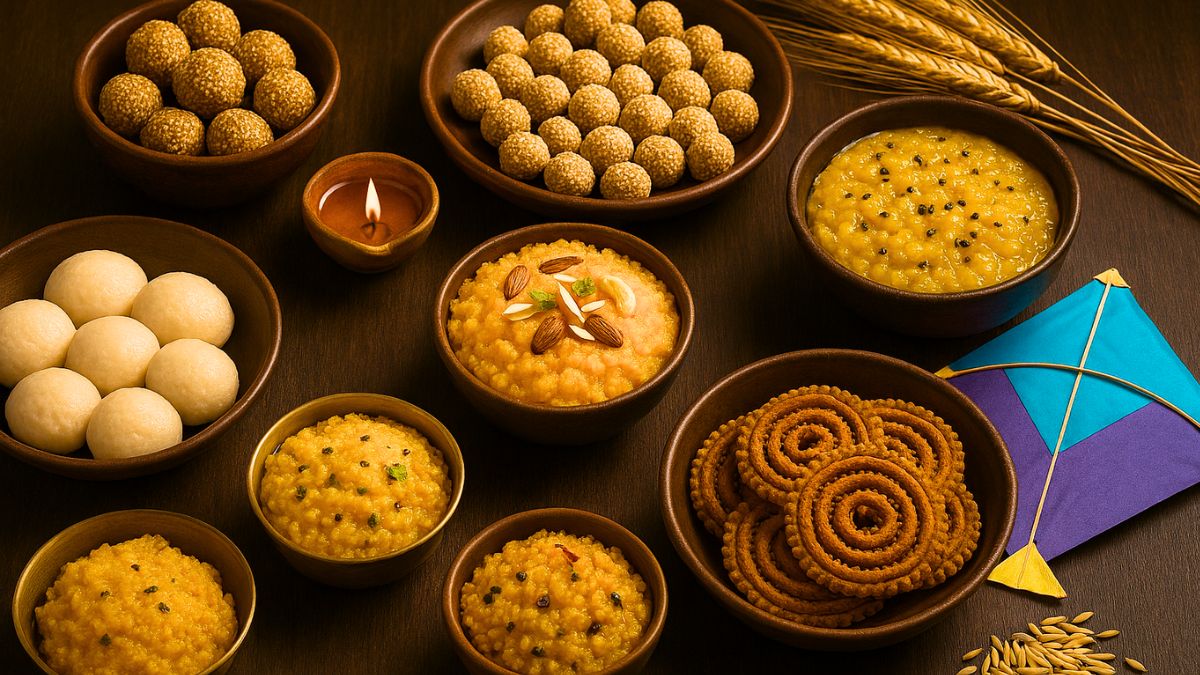Durga Puja in Bengal is more than just a festival. It is an emotion. It is five days of pandal hopping, dhak beats, sindoor khela, and of course, food that makes your soul dance. And if there is one thing that truly sweetens the celebration, it is the irresistible lineup of Bengali sweets. From melt-in-the-mouth rosogollas to creamy mishti doi, these mithais are tradition, nostalgia, and joy rolled into one. Whether you are offering bhog to Maa Durga, hosting guests, or simply indulging in post-pandal cravings, Bengali sweets are a must-have. Here is a curated list of the most popular Bengali sweets that deserve a spot on your plate and in your heart.
The Role Of Food In Durga Puja:
Food and Durga Puja celebrations go hand in hand. Bhog, the sacred offering, brings communities together, with steaming khichuri, labra, and fried treats feeding thousands. Then there are Bengali delights such as kosha mangsho, pulao, roll, chowmein and more, taking people on a gastronomic trail. While savouries set the stage, it is the sweets that truly steal the spotlight.
From rosogolla and chhena payesh offered to the goddess as symbols of purity to narkel naru and pati shapta lovingly prepared at home, mishti during Puja symbolises devotion, prosperity, and togetherness. This connection between tradition and taste is what makes Bengali sweets an essential part of the festival.
Also Read: Durga Puja 2025: Kolkata's Iconic Non-Veg Dishes To Try
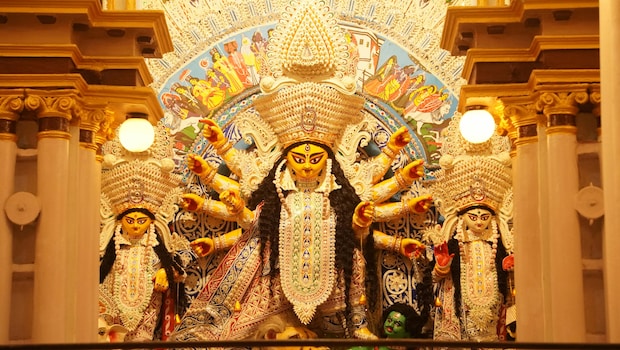
Photo Credit: Pexels
Durga Puja 2025: 15 Bengali Sweets Worth Celebrating
1. Rosogolla: The Crown Jewel Of Bengali Sweets
Soft, spongy, and soaked in sugar syrup, rosogolla is the undisputed king of Bengali desserts. Made from chhena, it is often offered as prasad to Goddess Durga. Every bite is juicy, light, and pure bliss.
2. Sandesh: Simplicity Redefined
Made from fresh chhena and sugar, sandesh is light, delicate, and often shaped into beautiful designs. During Puja, you will find versions flavoured with cardamom, rose, saffron, and even chocolate.
3. Mishti Doi: Bengal's Creamy Signature
This sweetened yogurt is thick, caramelised, and traditionally set in earthen pots. Made with reduced milk and jaggery, mishti doi is cooling, probiotic-rich, and the perfect end to a festive meal.
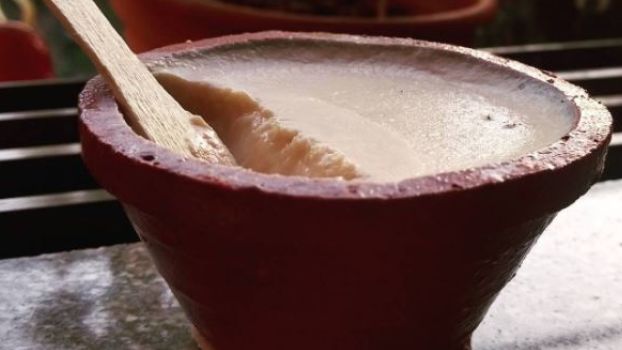
Photo Credit: Instagram/Kinrakahen
4. Pati Shapta: The Festive Showstopper
Think of it as Bengal's version of a crepe - soft rolls filled with khoya, coconut, and jaggery. Pati Shapta is usually made fresh at home during Puja and served warm or chilled.
5. Chhena Payesh: Classic Pudding With A Bengali Twist
A creamy dessert made with chhena, milk, sugar, and cardamom, chhena payesh is slow-cooked to perfection. Topped with nuts and saffron, it is often served as bhog during rituals.
6. Bhapa Sandesh: Steamed Elegance
Bhapa Sandesh is a steamed version of the classic sandesh. It is soft, airy, and subtly sweet, often flavoured with cardamom or saffron and garnished with nuts or rose petals.
7. Kheer Kadam: A Sweet Surprise In Every Bite
This layered dessert combines a rosogolla centre with a khoya coating, often dusted with coconut or powdered sugar. It is chewy on the outside, creamy inside, and absolutely addictive.
8. Cham Cham: Cylindrical And Celebrated
Cham Cham is a close cousin of rosogolla, but with a firmer texture and often garnished with coconut flakes or dry fruits. It is colourful, festive, and a favourite across generations.
9. Rasmalai And Khir Mohan: Rosogolla's Creamy Cousins
If rosogolla is the king, then rasmalai and khir mohan are its royal siblings. Rasmalai features soft paneer discs soaked in saffron-infused milk, garnished with pistachios and almonds. Khir Mohan, on the other hand, takes the rosogolla and bathes it in thick, creamy milk flavoured with cardamom. Both are rich, velvety, and indulgent - perfect festive showstoppers for those seeking something more regal than the everyday rosogolla.
Also Read: Why Bengalis Eat Fish And Meat During Navratri While The Rest Of India Fasts
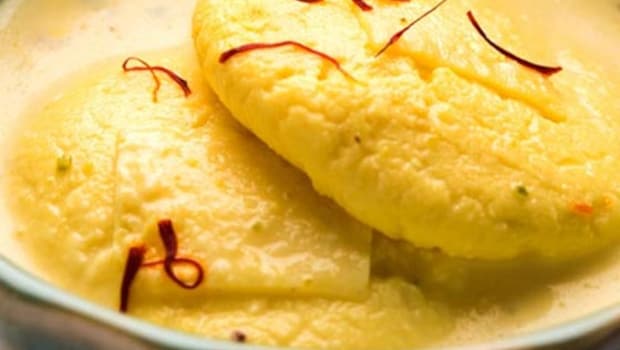
Photo Credit: iStock
10. Chandrakala: Crescent-Shaped Delight
This deep-fried pastry is stuffed with khoya, sugar, and dry fruits. Crunchy on the outside and soft inside, Chandrakala is a festive favourite that adds drama to your dessert plate.
11. Kala Jamun: Dark, Dense, And Delicious
A richer version of gulab jamun, Kala Jamun is deep-fried until dark brown and soaked in syrup. Its caramelised flavour and chewy texture make it a showstopper during Puja gatherings.
12. Kalakand: Fudgy And Festive
Made from condensed milk, Kalakand has a crumbly texture and rich taste. It is often flavoured with cardamom and topped with nuts, making it a perfect bite-sized indulgence.
13. Narkel Naru: Coconut Bliss In Every Bite
No Bengali Puja is complete without narkel naru - bite-sized coconut laddoos made with grated coconut, jaggery, or sugar. They are simple, homely, and often made in advance as part of festive preparation. Traditionally prepared by grandmothers, these chewy delights are the very definition of sweet nostalgia.
14. Pantua: Bengal's Answer To Gulab Jamun
Made from chhena and flour, Pantua is deep-fried and soaked in syrup. Sometimes flavoured with jaggery or date palm syrup, it is served warm and offers comfort with every bite.

file photo
15. Fusion Mishti: The New-Age Twist
Bengal may love its traditions, but its sweet tooth is evolving with the times. Walk into any modern mithai shop today and you will find chocolate sandesh, baked rosogolla, and even cheesecake-style mishti doi. These fusion desserts marry nostalgia with novelty - perfect for younger generations who want a modern spin on timeless flavours. They show that while Bengal's sweets are rooted in tradition, they are never afraid to experiment.
Also Read: How to Make Bengali-Style Khichdi For Durga Puja
Healthier Mishti Choices:
Festive indulgence does not always have to mean guilt. Many Bengali sweets now come in lighter, sugar-free versions. Consider date-palm jaggery rosogolla, sugar-free sandesh, or baked mishti doi made with low-fat milk. Even classics like narkel naru can be made healthier at home with jaggery instead of refined sugar. These options allow you to enjoy mishti while keeping wellness in mind.
Global Mishti Love:
From New Jersey to London, Bengali sweets are winning hearts worldwide. Rosogolla has become a festive staple in Indian communities across the world, while mishti doi and sandesh feature in fusion menus at trendy global restaurants. Even Michelin-star chefs are experimenting with these classics. Durga Puja may be rooted in Bengal, but its sweets are now ambassadors of culture across continents.
What Is The Most Famous Bengali Sweet Worldwide?
Without a doubt, the rosogolla holds the crown. Known for its spongy texture and syrupy sweetness, it is so iconic that it has received a Geographical Indication (GI) tag for Bengal. Today, rosogolla is not just popular in Kolkata or India; it has travelled across the globe. From sweet shops in New Jersey to dessert menus in London and Dubai, rosogolla has become a symbol of Bengal's culinary heritage. Its lightness, simplicity, and universal appeal make it the ultimate ambassador of Bengali sweets on the world stage.
Mishti Etiquette During Puja:
In Bengal, sharing sweets is as much about culture as it is about cravings. A box of mishti is a traditional gift when visiting friends or relatives during Puja. Offering narkel naru or payesh to guests is seen as homely warmth, while rosogolla or sandesh are the preferred choices for festive gifting. Sweets first, savouries later - it is the Bengali way.
Also Read: Flying This Week? Air India Adds Navratri Dishes To Its In-Flight Menu
Which Bengali Sweet Is Best For Offering Bhog During Durga Puja?
Traditionally, rosogolla, chhena payesh, and narkel naru are the most common bhog offerings. Rosogolla, soft and spongy, is considered pure and sattvik, making it ideal for prasad. Chhena payesh, a creamy rice pudding with chhena, milk, and cardamom, is often prepared fresh in temples as part of bhog. Narkel naru, coconut ladoos made with jaggery or sugar, symbolise prosperity and are easy to distribute among devotees. These sweets are not just delicious but are deeply tied to ritual and symbolism in the festival.
Homemade Vs Store-Bought Sweets:
Not all Bengali sweets are created in the mithai shop. Some come straight from the home kitchen. Classics like pati shapta, narkel naru, and payesh are lovingly prepared at home during Puja. Icons like rosogolla, sandesh, and cham cham are usually picked up from trusted sweet shops, where the craft has been perfected over centuries. You can find them on your favourite food app too. Together, they create the perfect balance of homely warmth and festive indulgence.
Which Bengali Sweets Are Easy To Make At Home?
Some mishti are simple, homely creations that every Bengali household prepares during Puja. Pati shapta (stuffed crepes) is a festive showstopper made with flour, coconut, and jaggery, often prepared in advance for guests. Narkel naru is a quick-to-make sweet using grated coconut and jaggery or sugar, beloved by grandmothers and children alike. Payesh, Bengal's version of kheer, is another easy, heartwarming dish made with rice, milk, and cardamom, perfect for bhog. These three require fewer ingredients, can be made in a home kitchen without special equipment, and carry generations of tradition in every bite.
Storage And Serving Tips:
Durga Puja often means trays of sweets arriving from neighbours, relatives, and friends. To keep them fresh:
- Rosogolla, cham cham, pantua: store in syrup, refrigerated, and consume within 2-3 days.
- Mishti doi and payesh: keep chilled and finish within 48 hours.
- Sandesh and fusion sweets: best eaten fresh, ideally the same day.
- Dry sweets like kalakand or narkel naru: last longer, up to 4-5 days when stored in an airtight container.
This year, whether you are in Kolkata or celebrating from afar, make sure your Puja thali is loaded with these festive favourites - you can make them at home, or just order online. Because in Bengal, every celebration begins and ends with a bite of mishti joy.
Disclosure: This article may contain links to third-party websites or resources. However, this does not affect the integrity of the content, and all recommendations and views are based on our independent research and judgment.
About Somdatta SahaExplorer- this is what Somdatta likes to call herself. Be it in terms of food, people or places, all she craves for is to know the unknown. A simple aglio olio pasta or daal-chawal and a good movie can make her day.




